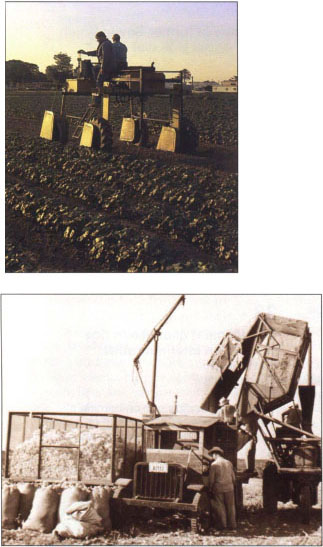All Issues
Science Briefs
Publication Information
California Agriculture 51(6):4-4.
Published November 01, 1997
PDF | Citation | Permissions
Full text
California cotton celebrates 75 years
The UC Shafter Research and Extension Center is celebrating 75 years of research that got the state's cotton industry off the ground and fostered its growth into a $1 billion enterprise. Cotton is now cultivated on 1 million acres. The U.S. Department of Agriculture (USDA) founded the facility in 1922 after 5 years of field trials in the Bakersfield area showed excellent potential for cotton in California. Although research at the station has been a cooperative effort between UC, USDA, Kern County, farmers and the Farm Bureau since its inception, UC took over management of the center in 1992.
The top cotton research contributions made at the UC Shafter Research and Extension Center fall into five categories: development of the Acala cotton variety, mechanization, integrated pest management, modern cotton management systems and precision farming.
The long and very strong Acala cotton fiber distinguished California cotton from cotton grown in other regions. In 1925, the California Legislature passed a law making Acala the only variety that could be grown in the state, ensuring East Coast buyers a premium quality product even when purchased sight unseen. Breeders have continued improving the Acala variety. UC still oversees evaluation of all varieties, approved for the state.
Mechanical planting, cultivating, weed control and irrigation management have been greatly modified over the years based on Shafter research, resulting in improved yields and reduced labor costs. Mechanical harvesting replaced the drudgery of hand-picking cotton.
Shafter research led to new techniques such as releasing predatory mites to control damaging mites (top). Below, an early cotton harvester.
Shafter scientists established the levels at which insect pests damage the crop enough to lower its value, enabling growers to reduce insecticide sprays. Insect monitoring and other accomplishments of Shafter scientists — such as breeding for disease and nematode resistance, coating seeds with fungicides to prevent seedling disease, and selecting a planting date based on the 5-day weather forecast to ensure a healthy start — have helped farmers manage crop pests with reduced pesticide use.
Many of the plant management tools developed at Shafter have been widely adopted not only in California, but also across the U.S. cotton belt. Since the 1970s, Shafter scientists have carefully documented the plant's development and how its physiology and growth processes interact with agronomic practices such as irrigation, fertilization and the use of growth regulators and pesticides. They adapted the complex data into simple, science-based guidelines for farmers. Based on the plant's growth and development, farmers can time cultural practices and gauge application of inputs. Ultimately, the information helps farmers optimize the way cotton plants use resources — such as water and nitrogen — to grow top-quality crops profitably with less impact on the environment.
Precision, or “zone,” farming promises to be the next opportunity for farmers to further reduce inputs and improve cotton crop yields. The idea is to reduce the number of times tractors drive over planting beds, saving fuel, chemicals, labor and, perhaps most importantly, reducing compaction.
Smith honored for IPM work
UC Berkeley professor emeritus Ray F. Smith has won the 1997 World Food Prize for his pioneering work in the development of integrated pest management (IPM).
Smith shares the $250,000 prize with Perry L. Adkisson, a former chancellor and professor emeritus at Texas A & M University.
“Smith and Adkisson helped bring about a fundamental shift in agricultural production marked by a dramatic reduction in the use of chemical pesticides,” said a statement issued by the World Food Prize Foundation. IPM approaches have reduced insecticide use by 50% on U.S. crops alone, the foundation said.





